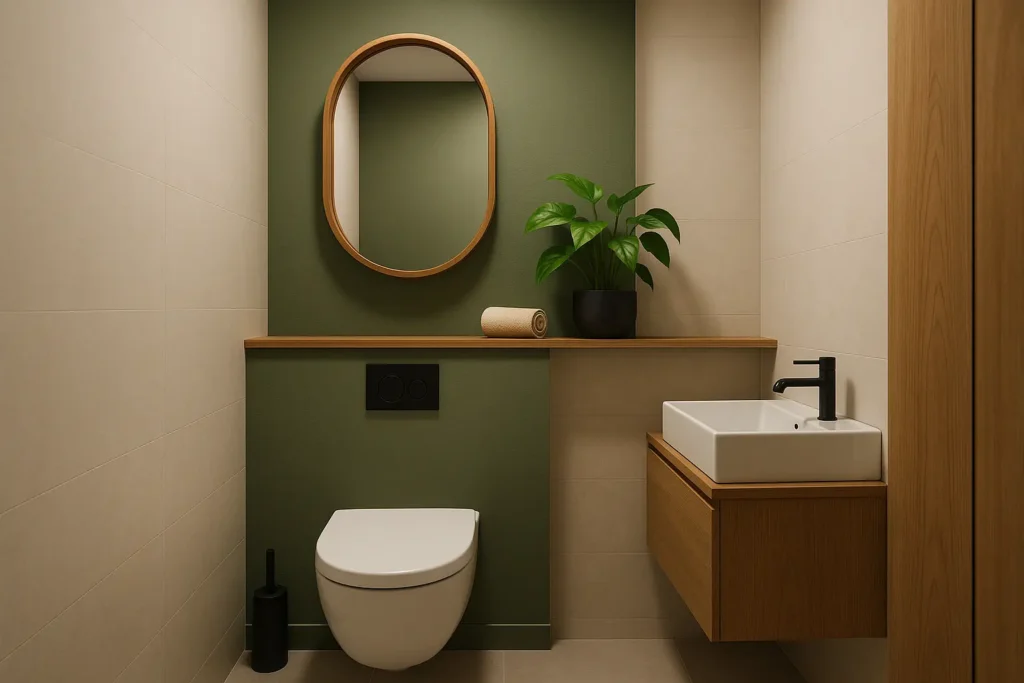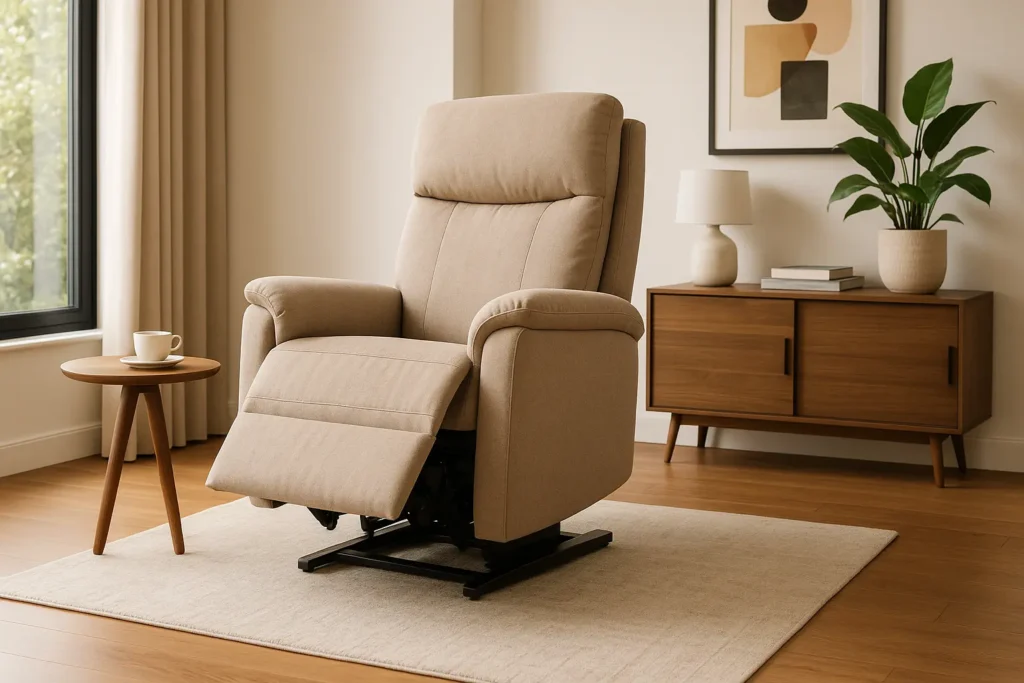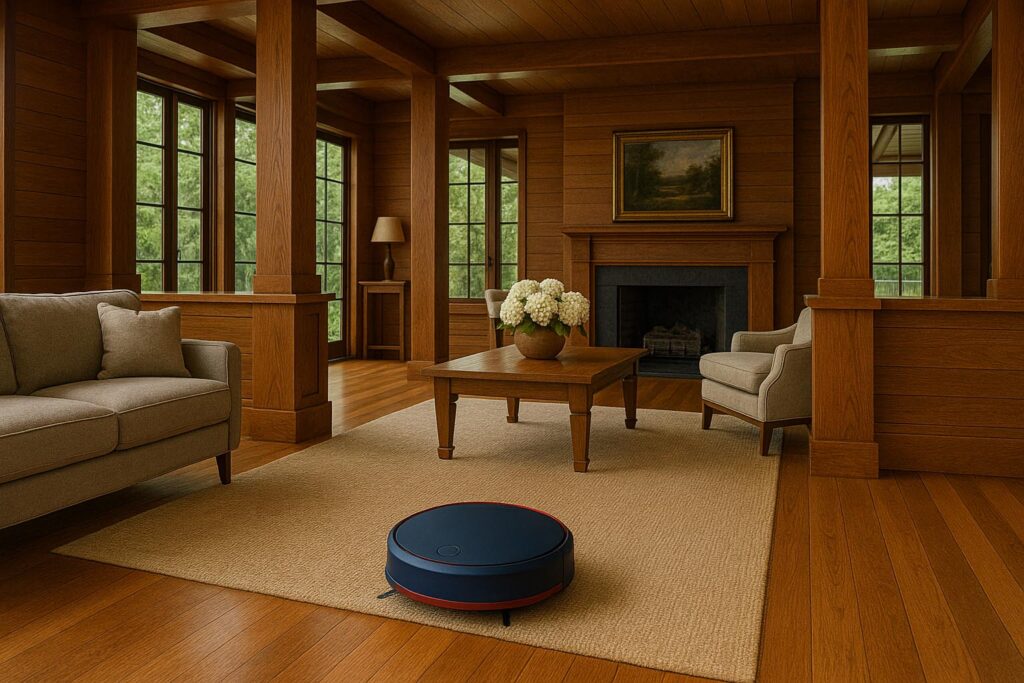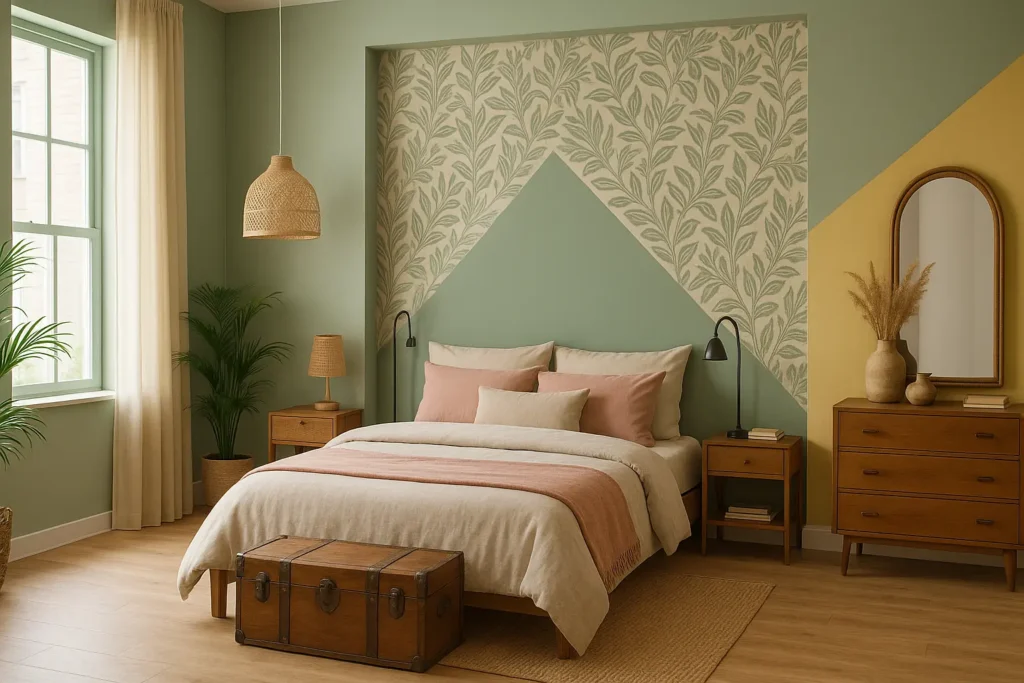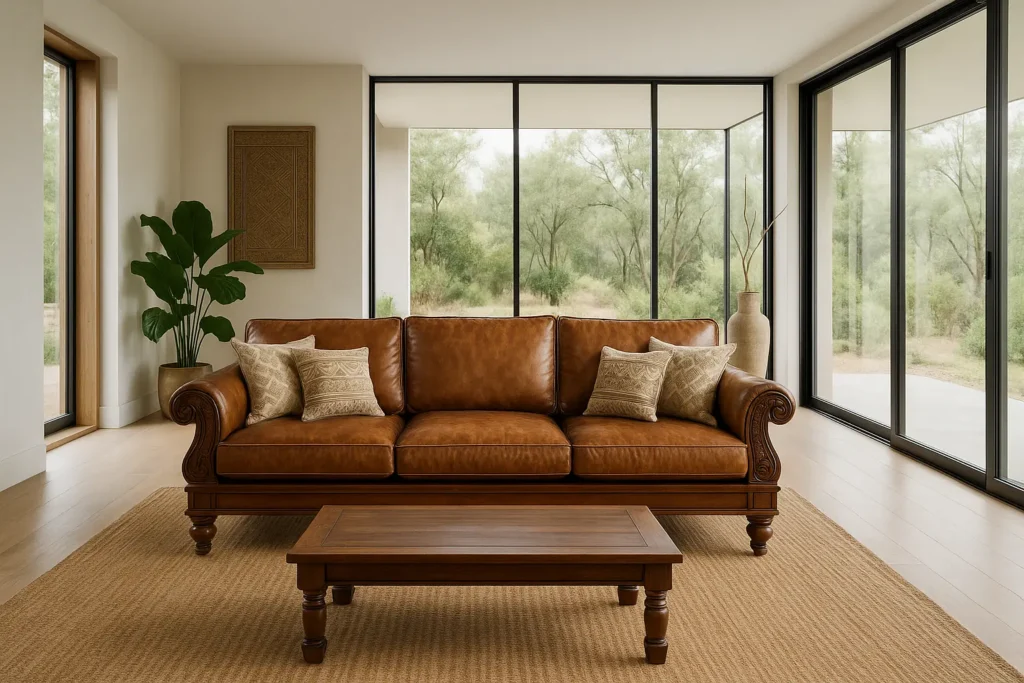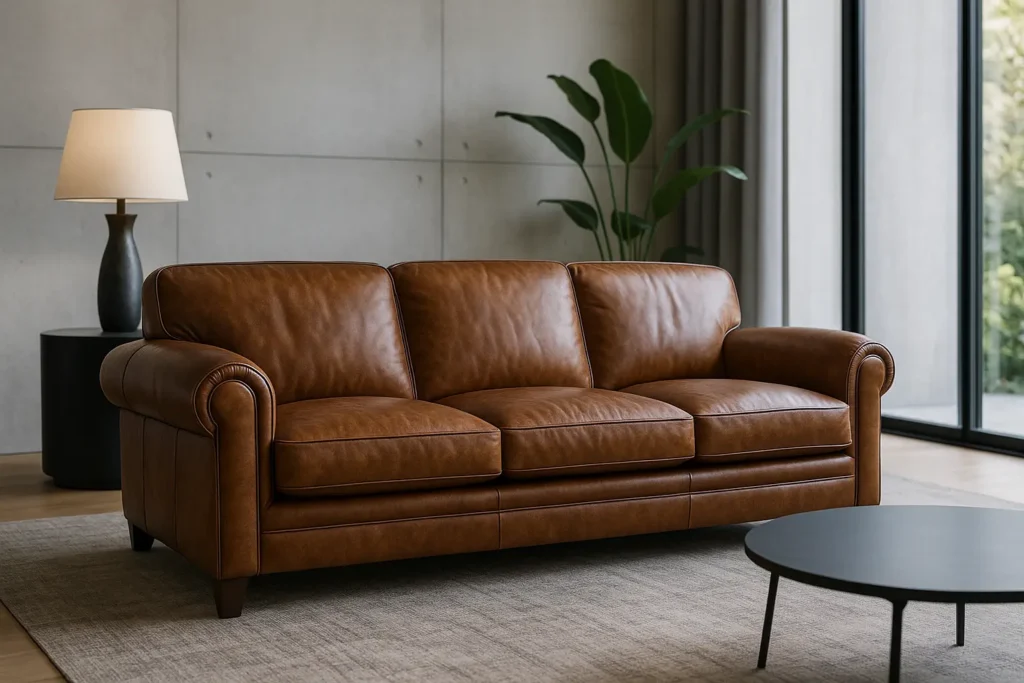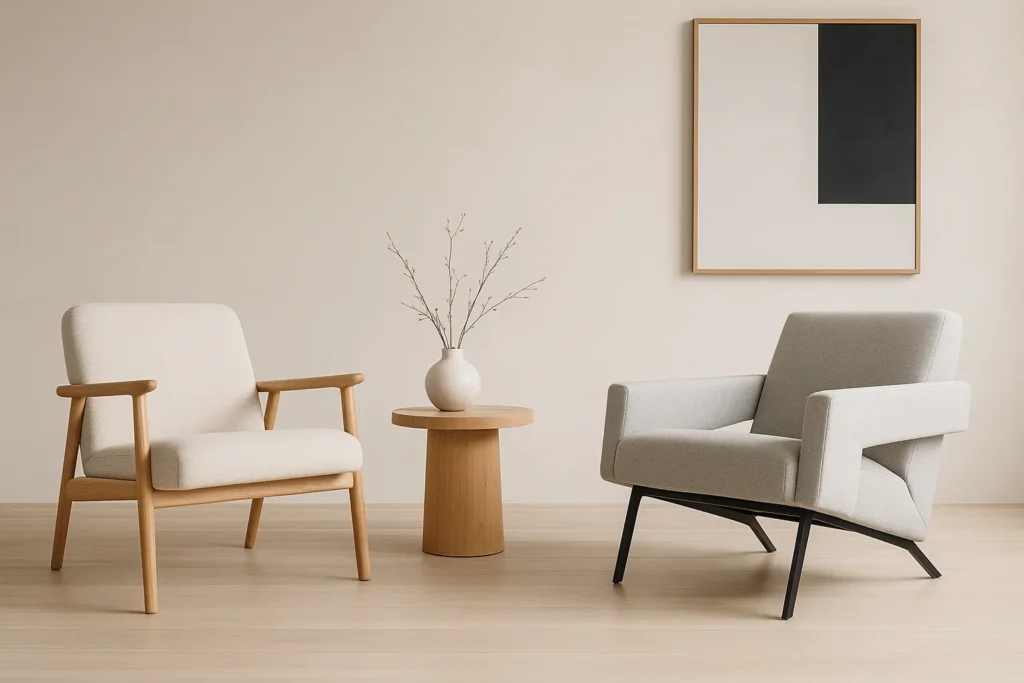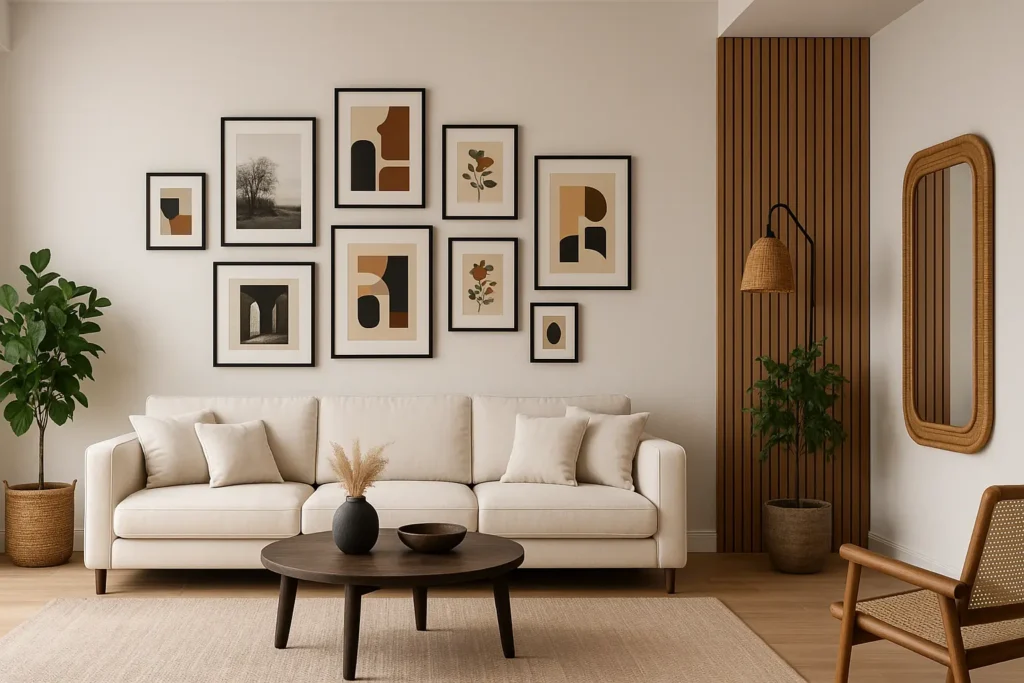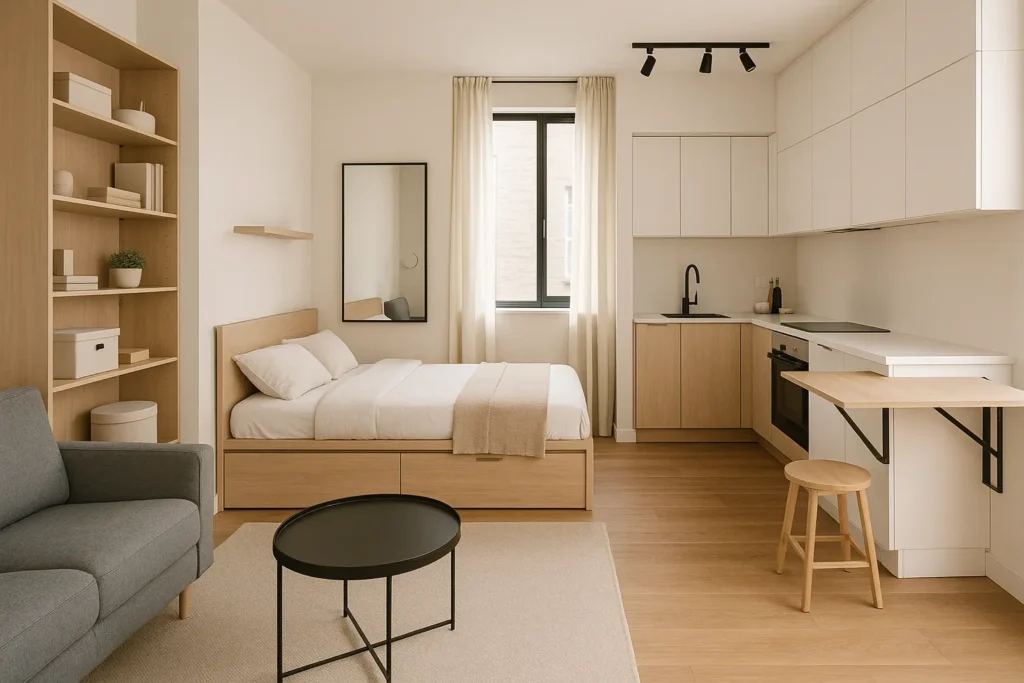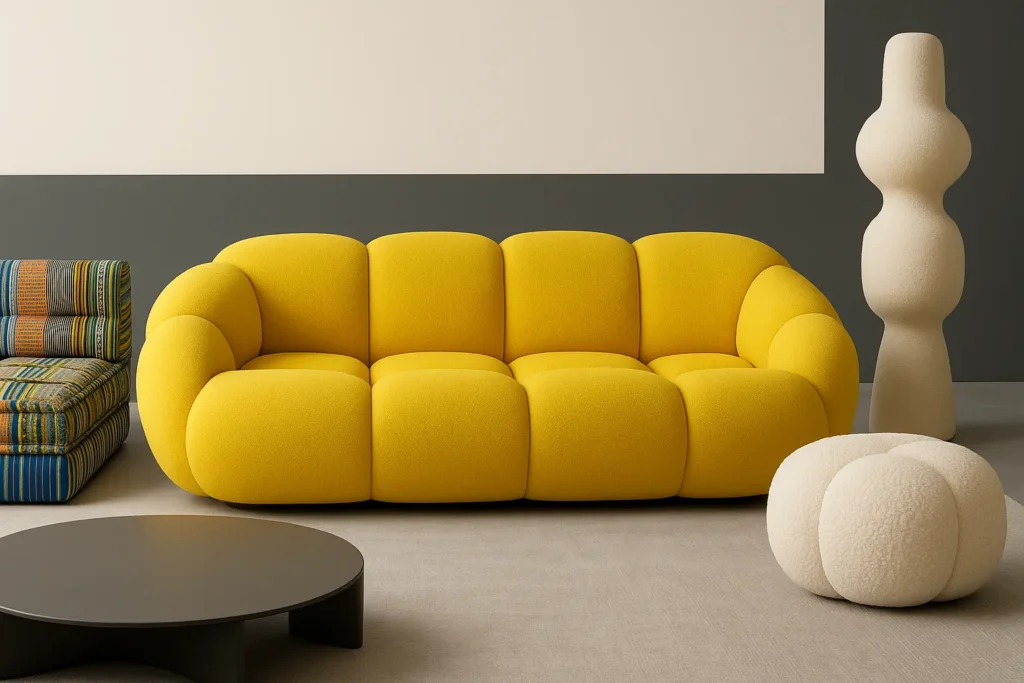THE designer electric wall radiator is now becoming an essential element in our interiors. Gone are the days when we had to hide these unsightly heating devices! The new inertia models transform this functional device into a truly decorative object. During my travels, I was able to observe how the Nordic countries have long since integrated this design approach to heating. By combining thermal performance and clean lines, these electric wall heaters bring a touch of elegance while ensuring optimal comfort. Here's how to choose the designer electric wall radiator which will enhance your interior while meeting your heating needs.
Our article in brief:
THE designer electric wall radiator transforms our interiors by combining thermal performance and careful aesthetics.
- Energy saving : Inertia models store heat and release it gradually, reducing consumption by up to 45% compared to conventional convectors.
- Decorative integration : Available in glass, brushed metal or natural stone, these radiators become real decorative elements.
- Adaptable formats : Horizontal versions are suitable for spaces under windows, while vertical models optimize the small areas.
- Noble materials : Natural stone, aluminum or tempered glass offer different thermal performances depending on needs.
In this article
The advantages of a designer electric wall radiator to enhance your interior
Energy saving and optimized thermal performance
THE electric wall-mounted inertia radiators are particularly economical for heating your home. Their advanced technology allows them to store heat and release it gradually, even after the device is switched off. Intelligent control systems automatically adjust the heating temperature according to your habits, thus avoiding any energy waste.
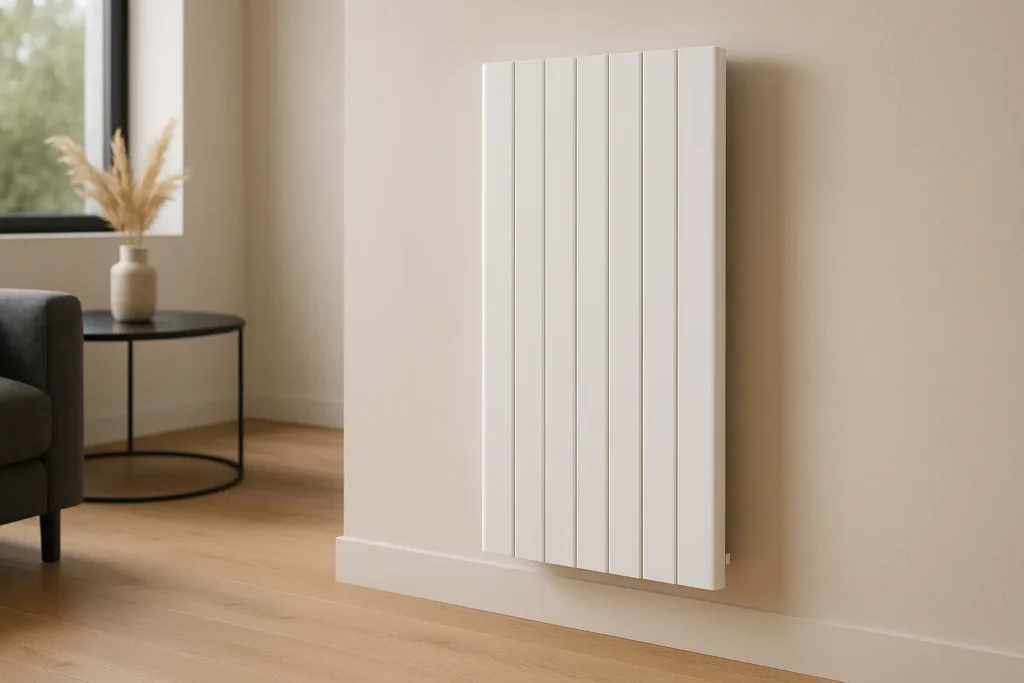
Weekly programming gives the possibility to define different temperature ranges according to your daily needsThis intelligent control can reduce your electricity consumption by up to 45% compared to a classic convectorOur renovation experiences have shown us that replacing old radiators with inertia models allows the investment to be recouped in just a few years.
Aesthetic integration into all styles of decoration
The major asset of a designer electric wall radiator lies in its ability to blend harmoniously into any decorative style. Contemporary finishes in glass, brushed metal or natural stone transforms these technical elements into real decorative assets for your interior.
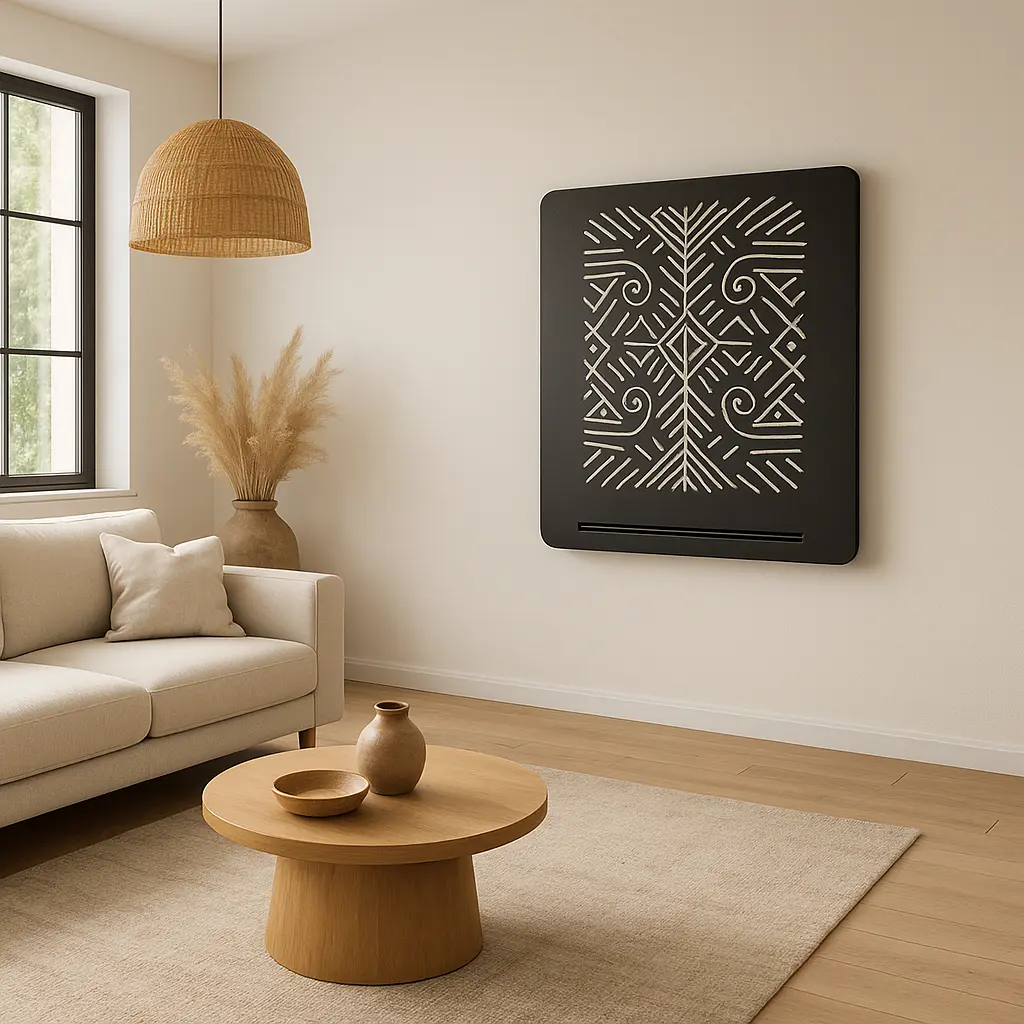
Inertia radiators are available in a variety of colors, from timeless white to bolder shades like matte black or pastel colors. Some models even offer the option of incorporating personalized patterns or textured effects that recall the chic ethnic inspirations we love so much at La Maison Coloniale.
Choosing between horizontal and vertical radiators: which size is right for your space?
The choice between a horizontal or vertical designer electric wall radiator This depends mainly on the layout of your room. Horizontal models fit perfectly into window spaces, creating a thermal barrier against heat loss. Their thermal radiation diffuses evenly throughout the room.
Vertical electric radiators, on the other hand, have the advantage of taking up less floor space while providing equivalent heating power. They are an ideal solution for small spaces or rooms with narrow walls. Their slender silhouette adds a touch of contemporary elegance that visually structures the space.
| Format of designer electric wall radiator | Benefits | Ideal location |
|---|---|---|
| Horizontal | Even diffusion, fits under windows | Living room, spacious bedrooms |
| Vertical | Space saving, modern aesthetics | Hallways, small rooms, bathrooms |
For a soft and enveloping warmth in your living space, choose a model whose power is adapted to the volume to be heated. A radiator that is too powerful will lead to overconsumption, while an undersized model will struggle to reach the desired temperature.
Materials and technologies: what options are there for a high-performance inertia radiator?
Dry inertia radiator vs. fluid inertia: two approaches to thermal comfort
THE inertia radiators are divided into two large technological families, each offering specific characteristics:
- Dry inertia radiator : these models incorporate a heating core made of refractory materials (cast iron, steatite, ceramic) which stores heat and releases it gradually. They offer a rapid temperature rise and even heat.
- Fluid inertia radiator : These radiators contain a heat transfer fluid (usually thermal oil) that circulates inside the unit. They deliver a gentler and more constant heat, ideal for long heating periods.
- Mixed radiators : some manufacturers offer hybrid technologies combining the advantages of both systems for optimized thermal performance.
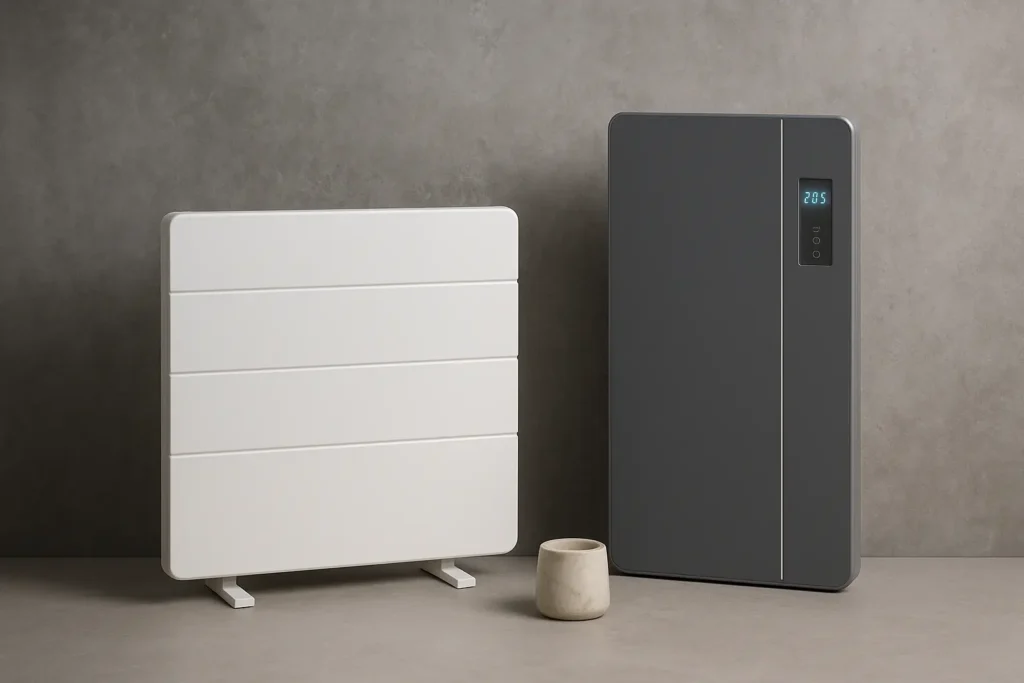
Noble materials: natural stone, steel, aluminum
The choice of material influences both the aesthetics and the performance of your designer electric wall radiator. Natural stone (marble, travertine, granite) offers exceptional inertia and brings a touch of timeless elegance to your interior. Steel radiators combine robustness and efficient heat conduction, while aluminum is attractive for its lightness and rapid temperature rise.
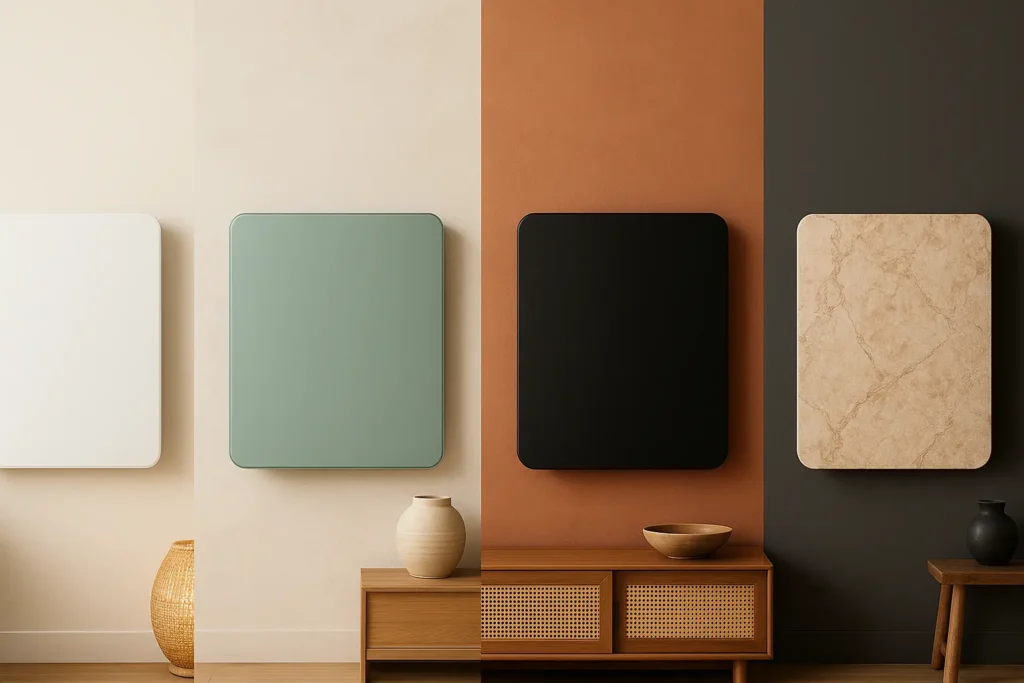
Enamelled steel represents an intermediate solution that is particularly appreciated for its resistance to corrosion and ease of maintenance. Tempered glass, for its part, is establishing itself as the flagship material for ultra-contemporary designer radiators with clean lines and its ability to fit into all decorative styles.
| Material | Thermal properties | Decorative style |
|---|---|---|
| Natural stone | Excellent inertia, gentle heat | Classic, ethnic chic |
| Aluminum | Rapid temperature rise | Contemporary, minimalist |
| Glass | Homogeneous radiation | Ultra-modern, refined |
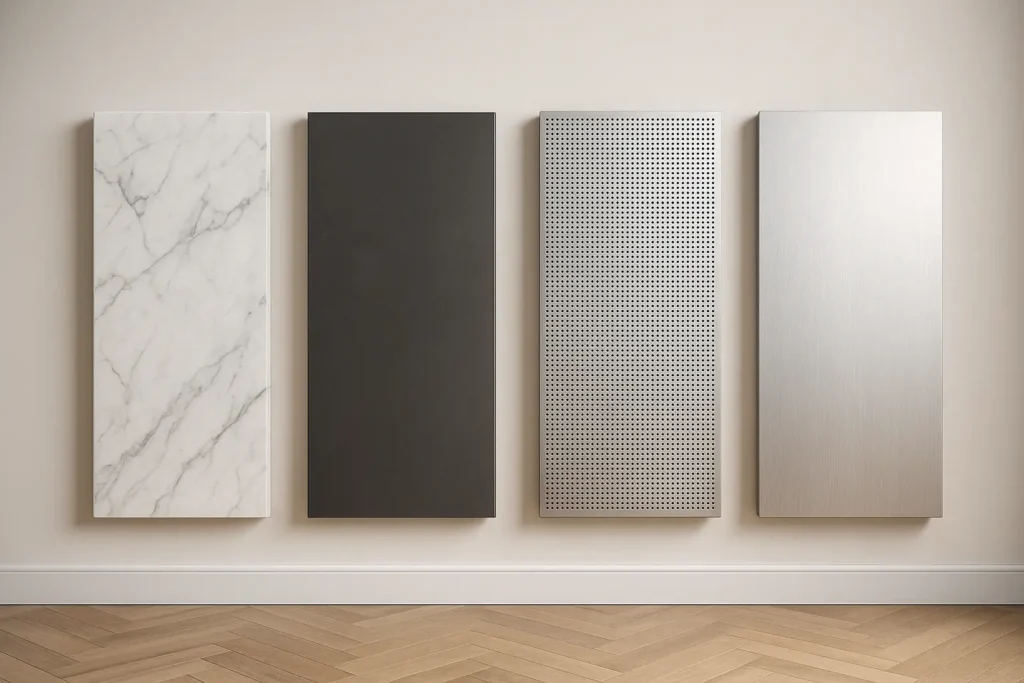
Tips for installing and maintaining your designer electric wall-mounted radiator
Installing a wall-mounted electric radiator requires a few precautions to ensure its efficiency and longevity. Choose a location that promotes natural air circulation, ideally under a window or on an exterior wall. Maintain a minimum distance of 15 cm from the floor and 30 cm from the ceiling to optimize heat distribution.
For installation that complies with safety standards, call a qualified electrician who will check the compatibility of your electrical installation. If you are completely renovating your space, consider coordinating the installation of your radiator with other work such as construction of a kitchen in cellular concrete for overall aesthetic consistency.
- Clean your radiator regularly using a soft, slightly damp cloth, without using abrasive products that could damage the finish.
- Periodically checks the proper functioning of the control systems to maintain optimal performance.
- Before the cold season, carefully dust the grilles and fins to avoid any risk of overheating and ensure efficient heat diffusion.
Opting for a designer electric wall-mounted inertia radiator transforms your approach to home heating. Beyond its primary function, it becomes a truly decorative element that contributes to the harmony of your interior. Current technologies allow you to combine thermal comfort, energy savings, and stylish aesthetics. Don't hesitate to invest in a quality model that will last for many years, bringing gentle warmth and style to your home.
